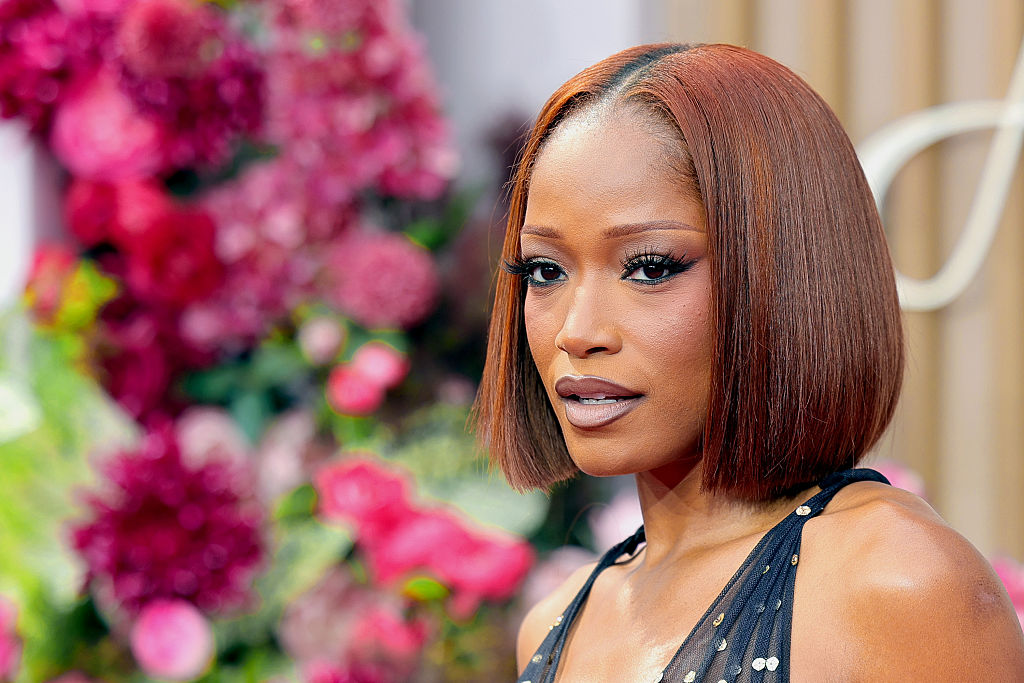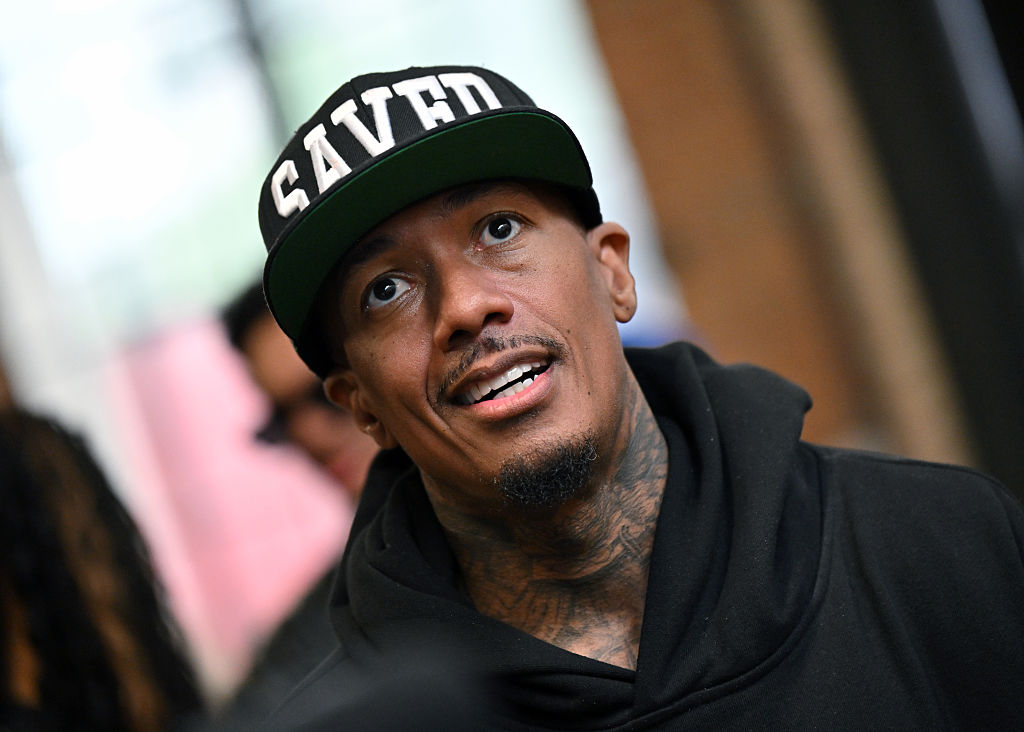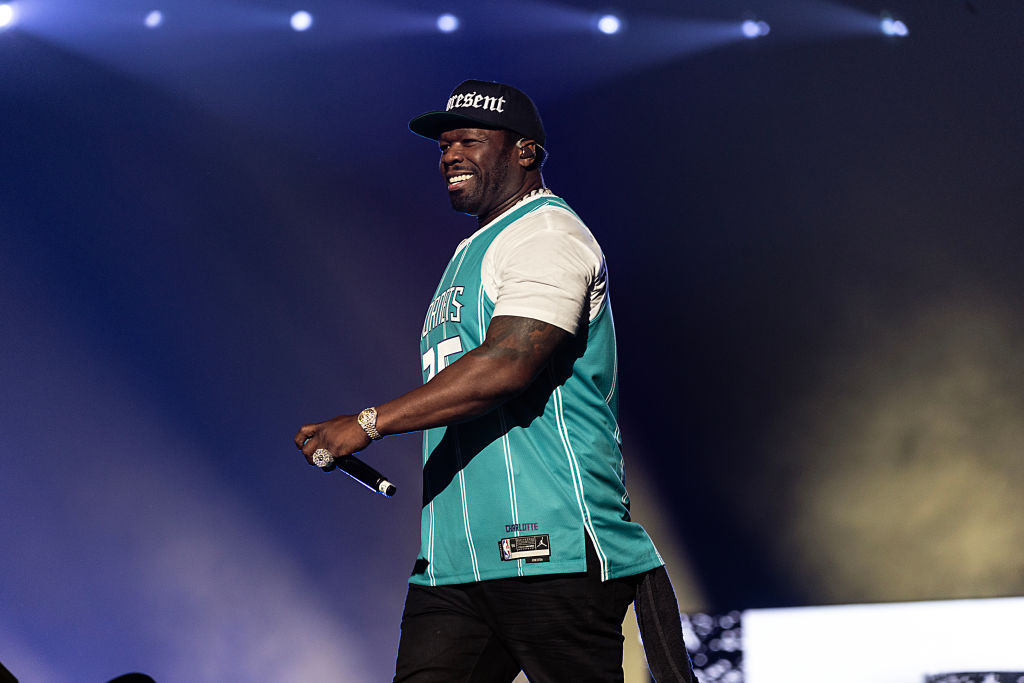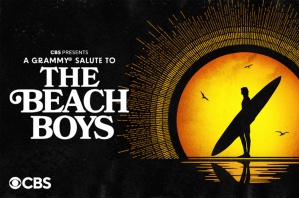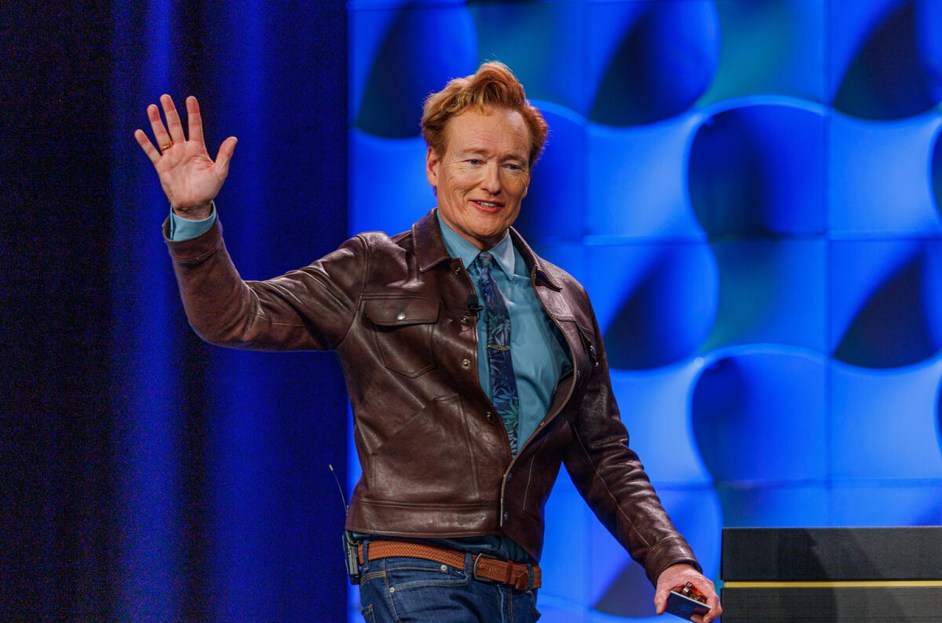television
Page: 2
Trending on Billboard
Floyd Roger Myers. Jr., an actor best known for his role as a young Will Smith in season three of the original The Fresh Prince of Bel-Air series has died at 42. TMZ was first to report the news, saying that his mother, Renee Trice, announced that her son had passed away early Wednesday morning (Oct. 29) from a heart attack at his home in Maryland. She reportedly noted that her son had suffered three previous heart attacks over the past three years.
Explore
See latest videos, charts and news
Trice honored her son in a Facebook post featuring a picture of Myers Jr. with his family with the caption, “THIS NOT SUPPOSED TO BE SO.”
The actor’s younger sister, Tyree, shared a remembrance on a Gofundme page to support her brother’s family in which she wrote, “It is with heavy hearts that we share the unexpected passing of my beloved brother, Floyd Roger Myers Jr , who tragically left us today after a sudden heart attack. He was a devoted father, loving brother, and friend whose kindness, laughter, and warmth touched everyone he met. Roger leaves behind his four beautiful children — Taelyn, Kinsley, Tyler, and Knox — and our loving family is now facing the unimaginable loss of someone who meant everything to us.”
Myers Jr. made his on-screen debut in 1992 when he played Young Will in an episode of the sitcom that helped launch rapper Smith into a three-plus decade acting career. That same year, he also played Jackson 5 member Marlon Jackson in the ABC miniseries The Jacksons: An American Dream, which also starred Vanessa Williams, Angela Bassett and Billy Dee Williams.
The actor’s limited resumé also included a one-episode appearance in the short-lived 2000 WB TV drama Young Americans. Myers Jr. was also the co-founder of the Fellaship Mens Group, whose goal is to help men “lead, heal & thrive.” The group honored the father of four with an Instagram tribute that read, “RIP to our good brother @rocwonder one of our co founders. Gone but never will be forgotten. The mission will continue in your honor. Next mens meeting will be one for the books like we talked about! Love you bro, rest easy, big bro will take it from here.”
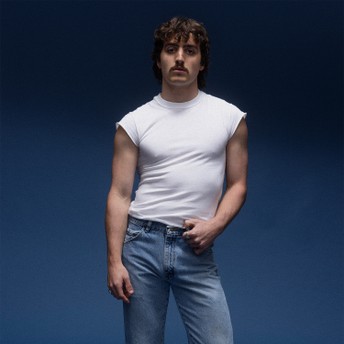
Trending on Billboard Kelly Ripa and husband Mark Consuelos have made a habit of going all-in on Halloween on Live With Kelly aa Mark. Their annual epic, multi-costume extravaganzas will crank up another notch on Friday (Oct. 31) when they bust out more than 65 costumes, including Kelly in white pancake makeup and a pink […]
Keke Palmer might be one of the most beloved celebrities in the mainstream today, but it appears that her fans have a bone to pick with her over a new series she greenlit. Keke Palmer is facing backlash after promoting a new series, Southern Fried Rice, which follows the exploits of a Korean American adoptee who gets accepted into an HBCU.
Southern Fried Rice is part of Keke Palmer’s KeyTV lineup and stars Page Yang as Koko, who grew up in a Black family and enters the fictional Wright University in Atlanta.
More from Instagram:
Southern Fried Rice follows KoKo Jackson, a Gen-Z Korean-American adoptee raised in a tight-knit Black Southern family. When she leaves her small-town to attend Wright University, an elite HBCU in Atlanta, she enters a world that challenges her sense of belonging.
Love News? Get more! Join the Hip-Hop Wired Newsletter
We care about your data. See our privacy policy.

Trending on Billboard
Sabrina Carpenter is a tidy 5′ tall. Which might explain why she’s looking for a sky high king in a sketch that got cut from her hosting/performing stint on Saturday Night Live last weekend. The “Tall, Plain Boyfriend” bit starts out with Carpenter on a date with new cast member Jeremy Culhane, who is just boring her to tears with his dumb stories.
After faking a laugh, Carpenter looks to camera and admits, “Dating can be tough. Some guys try to hard to be funny or interesting. Especially the little ones.” Cut to Culhane doing lame bits with chopsticks as walrus teeth.
“It feels like they’re doing the most. But sometimes, you just want less. So that’s why I switched to Tall, Plain Boyfriend,” she says with a smile, walking over to a towering box, whose cover she removes to reveal vanilla vision Ben Marshall, who recently got bumped up from his gig as part of the Please Don’t Destroy digital short trio to featured cast member.
“No drama, no personality, just a long body with hair on head,” she says. “All the girlies will be jealous.” Asked what he does for a living, Carpenter brags that her beloved tall stack is “6’5″” and that’s all he needs to do. As for where he grew up, well, see previous. His name? Who cares, did she mention that he’s 6’5″?
The best part? Tall, Plain Boyfriend comes with some of the best “lukewarm” takes about everything. Sleeping? “Feels so good when you’re tired.” Life? It’s crazy, but “dogs are so fun,” right? And you know it, opening presents on Christmas is, like, “the best!”
“Because if you need a deep conversation, b–ch, listen to a podcast!,” Carpenter advises as she cuts to other satisfied girlfriends whose boyfriends don’t even know what they do. “Does Tall, Plain Boyfriend have a perfect face?” Carpenter wonders of the partner who comes pre-loaded with bland empathetic phrases like “that sucks!” and “that’s crazy” and, of course, “that’s crazy how much that sucks. “Girl, I can barely see up there! That’s none of my business,” she enthuses.
“He might not make you laugh or think, but he will make you feel tiny,” Carpenter promises..
Carpenter had a full night last Saturday, performing her Billboard Hot 100 chart-topping Man’s Best Friend single “Manchild” on a bedroom set wearing nothing but a white t-shirt and pink SNL underwear. She returned later in a bedazzled karate gi and black belt for a dojo-themed performance of “Nobody’s Son,” during which she dropped two f-bombs live on air while breaking boards and taking out fellow black belts.
Her first hosting gig — she was previously the musical guest in May 2024 — also included some memorable sketches, including “Girlboss Seminar,” a cold open featuring new fan favorite “Domingo,” the school dance “Grind Song” short and the NSFW “Shop TV: Pillow” sketch about a way-too anatomically correct neck pillow.
Watch Tall, Plain Boyfriend here.
noreferrer” >

Three hours of prime time real estate, more than 30 musical acts bookended by lightly rehearsed comedy bits and a Radio City Music Hall’s worth of huge stars. What could go wrong?
Potentially everything, actually. But somehow, SNL 50: The Homecoming Concert director Beth McCarthy-Miller not only managed to land the plane with the February special, but she corralled some of the biggest stars in the world for one of the most dazzling, surprise-filled nights of music in recent memory.
And, not for nothing, it all happened with way less rehearsal time than you could ever imagine.
Trending on Billboard
“They called me a year and a half ago and asked me and I absolutely said ‘yes’ right away. … I’m a total music and comedy nerd,” Emmy-nominated director McCarthy-Miller tells Billboard about her return to multi-cam TV after a career that has included stints behind the camera for episodes of Veep, The Good Place, Modern Family, 30 Rock and an 11-year run as SNL‘s director. “I would do anything for [SNL creator/producer] Lorne [Michaels], who was so instrumental in my career. It was like going back for a high school reunion.”
Sure, if your high school class included Lady Gaga, Eddie Vedder, Bill Murray, the Backstreet Boys, Miley Cyrus, Bad Bunny, Post Malone, the living members of Nirvana, Snoop Dogg, Jelly Roll and Cher.
Those are just some of the acts that McCarthy-Miller juggled on show night in the penultimate prime-time celebration of the beloved sketch series’ 50th anniversary. The programming also included the three-hour SNL50: The Anniversary Special that aired two days later, as well as the earlier mind-bending Ladies & Gentlemen… 50 Years of SNL Music documentary directed by The Roots’ Questlove and the four-part SNL50: Beyond Saturday Night docuseries on Peacock.
In other words, tons of competition for booking and viewers’ eyeballs.
Beth McCarthy
Barry Goldenberg
McCarthy-Miller knew it was a monumental task, but she was up for it and, frankly, after working with Michaels to see who was available (and not) and putting the million little pieces together, she can now confidently say that “there is nothing I would change.”
Billboard hopped on the phone to chat with McCarthy-Miller about the show and to find out why she is now fully convinced that The Roots can play any song ever recorded.
You worked on the legendary MTV Unplugged with Nirvana, but whose idea was the surprise Post Nirvana performance with Post Malone and the living members of the group?
Dave Grohl was involved early on, and there was always interest in the Foo Fighters and possibly [Nirvana bass player] Krist [Novoselic] joining them. I know during COVID, Post did a YouTube Nirvana show with Travis Barker, and I think it became a natural segue. Dave and Krist had used St. Vincent and other singers before for the FireAid show and the guys just really enjoyed playing with him. After rehearsal, I went back to check on everything with [guitarist] Pat [Smear] and Dave, and they were like, “That was fun!”
The unexpected collabs really ruled the night. You also had Miley Cyrus and Brittany Howard doing a Queen cover (“Crazy Little Thing Called Love”) at the top. How involved were you in piecing those together?
The Miley thing was a combination of everyone asking, “What would you want to see?” I think Miley wanted Brittany, and that was a Lorne and Miley thing. … [show co-executive producer] Mark Ronson had a lot do with the pace of the show and where people should go and when. It was definitely a combined effort.
I have to ask, were there any of those collabs that didn’t happen that you went for? Frequent SNL guest Justin Timberlake couldn’t make it because he’s on tour, but who else did you reach out to?
There were people who were just not available who would have been great. Timberlake, not available and also for the Sunday show. I think Bruce Springsteen wasn’t available and people who were asked who made their mark on the show but were just not available. It was definitely tricky to try to represent as much as you could without being able to represent everybody obviously and represent different genres. I thought it all kind of worked out beautifully.
I saw someone ask, “Why didn’t they have Ashlee Simpson come back for a redemption arc?“
[Laughs] I’m sure Ashlee wouldn’t have enjoyed that phone call either. Or just have her come out and do a little hoedown dance during someone else’s number? I think we left the comedy to the comedians on that show, which was great. Everyone was having so much fun and would show up early for rehearsals to watch. Bill Murray hung out almost the whole day when he was rehearsing. So he rehearsed his [Nick the Lounge Singer bit] all day with the girls [Maya Rudolph, Cecily Strong and Ana Gasteyer], and then he came out and was just hanging out watching the rehearsals when Backstreet Boys were rehearsing and he was singing at the top of his lungs in the empty Radio City Music Hall along to the Backstreet Boys. Everyone was so happy to be there and be part of the show.
Another highlight was Lady Gaga doing “D–k in a Box” with Andy Samberg. Did Gaga need convincing to join in on that? It was also fun to see cast members incorporated into musical numbers, like Fred Armisen playing drums for Devo and the B-52s.
Gaga was in for that and she was not necessarily performing. She was definitely doing the “D–k In a Box” bit and we had somebody fall out and she then performed [“Shallow”]. We had T-Pain and Bad Bunny, and Eddie Vedder was so funny as Captain Jack Sparrow.
What was the rehearsal time to swap Gaga in for that bit?
You mean besides no rehearsal? We rehearsed that whole show in two days. So we had about 45 minutes to rehearse that [Lady Gaga] bit. I had pre-blocked it with stand-ins just so I knew where we were going. Then we literally got everybody [Gaga, Samberg, Eddie Vedder, Lonely Island, T-Pain, Bad Bunny] up there for 45 minutes and they did a run-through. I think T-Pain didn’t even come to the run-through.
Were there any worries about catching a stray by dipping into the Drake/Kendrick beef with the Marty and Bobbi bit singing “Not Like Us” with Will Ferrell and Ana?
No. I thought it was hilarious. If anyone is gonna take that as a diss, they need to find a sense of humor somewhere because that was so funny. Will and Ana threw that together with [longtime SNL writer] Paula Pell in about 24 hours.
More than 600 musical acts have performed on SNL over the years, so how do you start cutting down the list for your show?
Well, you start cutting it down by the people who say no. [Laughs] No, but it’s really hard and thank God they had done that great documentary that Questlove did, because it really encompassed how important music is to SNL. Because everyone was really represented quite well in that. So then it was just decisions on what was going to be on the main show and what was going to be on Friday night show. I thought the Paul Simon/Sabrina Carpenter thing was perfect for the Sunday show. I think for a minute that was on the Friday show, then it went to the Sunday show, and Paul on the Sunday show was perfect, just where it should have been.
Who was your must-have? Who did you chase to no avail?
A few, of course. There were definitely people who weren’t able to be there who would have been great: Mick Jagger, Springsteen, Stevie Nicks. But the other side of it is, you couldn’t get everybody and I thought every genre on music that’s been on SNL was represented in that show.
Jimmy Fallon worked his ass off in that opening “Soul Man” bit.
He was working very hard and very out of breath.
Did it feel mean in retrospect to make him host and talk so much right after that?
[Laughs] It was always his idea to do some opening number, and I thought that was the perfect representation and Jimmy does stuff like that better than anybody else. It was a little difficult for the poor guy to do that, but he did do it in run-through, but I don’t think he hit it as hard. He was, literally, out of breath. But every comedian or musical performer, you put an audience in front of them and they take it up to 11.
Tell me about something we didn’t see onscreen that blew your mind. Or something that really captured the vibe of the moment for you.
In general, the whole thing felt like a family reunion. People were sticking around to watch other people rehearse, and people were coming over from 30 Rock to Radio City to see other people rehearse. The unsung heroes of that Friday night show were The Roots. Those guys worked their butts off and were literally thrown into the fire a couple of times and having to work out and learn songs in 15 minutes, get off stage and then come back in half an hour. And then, on the live show, Brittany Howard’s guitar went out and stopped working and the guitar player from The Roots [“Captain” Kirk Douglas] picked up that guitar solo on the fly. It was amazing. They can pick up a song in five seconds and they were also playing in all the musical comedy bits too!
There were so many A-listers in the audience that it could have been a typical stuffy awards show vibe. So were you surprised by their freakout over Backstreet’s “I Want it That Way”? Tina and Amy were singing like high schoolers, Adam Sandler, Paul Rudd were shouting along. Even Jerry Seinfeld got in on it.
When they rehearsed and they do what they were gonna do, and they said, “Now you sing,” I was like, “Oh no! It’s an industry crowd, I hope they’re gonna sing!” But literally every person knew every word. Paul Rudd, Pedro Pascal, Jerry Seinfeld was singing with Brian [Littrell]. It was nuts. Every time I cut to the audience, I’ve never, ever had a better cut-away experience in my life where every time I cut to a shot there was some incredibly famous person singing at the top of their lungs having the greatest time of their life.
What do you think it was about them that go everybody so excited?
I think everybody was so psyched for that experience. I said to Lorne, “You’re literally watching your legacy in front of your eyes.” It’s kinda nuts. I think everyone has a deep appreciation for Lorne and what he’s accomplished, and I think everyone just came to have fun.
One of the things that really grabbed people was Pedro Pascal just losing it to DEVO. When you saw that, were you like, “Oh, we need to cut that immediately”?
Yes, it was nuts, it was crazy. Every time I cut to the audience they were having the time of their lives. Pedro literally gyrating to DEVO was, I think, my favorite cut-away of the whole night.
Was there anything that did not go as planned that was a pleasant surprise or an “oh sh–” moment?
I think almost everything happened the way it was supposed to happen magically, which I will tell you did not happen in run-through. The fact that on-air it all happened the way it was supposed to was a Christmas miracle. We made every changeover, but there was one really big changeover where we had Jimmy in the audience and he was supposed to go over to talk to Sandler, and Sandler wasn’t in his seat because he’d just done the Post Nirvana intro and he was backstage talking to people. So then he just freewheeled it, which was amazing, and we were able to make the turnaround a little faster on the night of the show so he wasn’t there laying with egg on his face for too long. Other than that, everything happened the way it was supposed to happen.
I still sing “Star Wars, nothing but Star Wars” all the time, so tell me how the Bill Murray lounge singer bit came together?
I think [longtime SNL writer] Jim Downey wrote it for Billy, and then Billy asked for three of the girls and they tried to get who was available. Ana, Maya and Cecily agreed to do it and they rehearsed it in the lobby of Radio City and then came onstage and rehearsed it the day before the show.
The four-part series showed you how tight rehearsal and writing is on the show, but it sounds like your show was just as harried, if not more.
It was crazy nutty. It was two days of rehearsal and then show day, and we did a little rehearsing on show day before we did a run-through. We ran through the whole show just once.
It seems like you tried to pay tribute to so many through the song choices, like Eddie Vedder tipping his hat to Tom Petty with “The Waiting,” or David Byrne doing “Heroes” or Chris Martin with Bonnie Raitt…
It was definitely a conscious decision and Eddie [Vedder] was going to do “The Waiting” and we asked if he could say something about Tom [Petty] at the end of the song. He said he would do it in the middle during the break and then he said something completely different at run-through than he did during the show! He mentioned more of the musical artists on the show [during run-through], and then on air he did a tribute to the cast members.
What does it take to get Cher to put on those assless chaps again?
C’mon! How crazy is that? That she looks like that at her her age. I’m embarrassed of myself because I don’t look like that and I’m a lot younger. And how amazing did she sound?
The cast are used to staying up all night writing and long hours to get the show on air each week. But when you think about putting together this show, what was the biggest challenge now that you’ve had time to think about it?
The most challenging part was just getting the show rehearsed and on the air without any disasters. Also the difference between an hour and a half and three hours and also the difference in doing it at Radio City and having these huge band changeovers. It was logistically a lot more difficult… just putting all the pieces together. It was like a Tetris puzzle, so if one piece fell out you were in big trouble. Like when Brittany’s guitar stopped working, I said, “Oh God, I hope this doesn’t keep happening to us tonight.” And it didn’t and we were all good.
Source: Paras Griffin / Getty
Many of us are familiar with the fact that Nick Cannon has fathered enough children to ensure his bloodline will remain on this Earth until the end of time, so it shouldn’t be surprising that the man continues to take on new jobs as children ain’t cheap and he’s making sure his babies eat well.
According to Variety, Nick Cannon will be adding a new hosting gig to his ever-expanding portfolio as he will now be taking on Lego Masters, replacing the show’s former host, Will Arnett. Though Will Arnett has been the show’s host for the past five seasons, the Fox network is looking to inject some new energy into the show and who better than the man who can’t seem to stop procreating and wildin’ out on a daily basis, right?
Per Variety:
“We’re thrilled to bring ‘Lego Masters’ back for another season,” said Michael Thorn, president of Fox Television Network. “Alongside our incredible creative partners, this beloved series continues to captivate audiences. Originally launched with the wonderful Will Arnett, the show now enters an exciting next chapter with Nick Cannon at the helm, who brings a new fun energy to the competition.”
Endemol Shine North America CEO Sharon Levy called Cannon “a proven entertainer with a fantastic rapport, and we’re eager to witness how his unique style will elevate the competition during the new season,” said Levy. She also saluted Arnett for five seasons of brick-building action.
While everyone seems excited to be bringing Nick Cannon on board for the show’s sixth season, Arnett was given his flowers for making the show the phenomenon it is today (amongst Lego enthusiasts anyway).
“Of course, none of this would have been possible without the phenomenal Will Arnett, who guided us through five truly superlative seasons. Will’s comedic brilliance and genuine passion for the show laid the perfect foundation, and we are immensely thankful for his incredible contribution,” Levy said.
Cannon for his part is excited to be taking on the new gig as he too is a fan of what Will Arnett has brought to the Lego game.
“I’m a huge fan of ‘Lego Masters,’ said Cannon. “It’s an honor to join the series and host another show with my Fox family. Season six we’re bringing an action-packed hour full of family fun, passion and for the first time ever, in-person audition episodes. I can’t wait to see the insane creations and give away a big bag of money to the best of the best.”
Don’t be surprised if someone builds Nick Cannon a baby crib made out of Legos or something.
What do y’all think of Nick Cannon replacing Will Arnett as the host of Lego Masters? Let us know in the comments section below.
HipHopWired Featured Video
Jeff Hahne / 50 Cent
Despite having a very rocky relationship with Starz, 50 Cent continues to land original programming with the network.
Starz announced it has greenlit a new original show called Fightland, which the cable network describes as a “high-octane scripted drama set in the cutthroat, high-stakes, cash-rich world of British boxing.”
Fightland also marks another collaboration between Starz and Curtis “50 Cent” Jackson through his G-Unit Film & Television, who serves as an executive producer on the show.
Starz has ordered eight episodes of the show with production set to begin in London this fall.
“Fightland” follows a disgraced, formerly incarcerated boxing champion who returns to London to seek vengeance against the crime family he thinks betrayed him. With edge-of-seat action and populated by dangerous characters, this is a world of money and power never seen before.
50 Cent Anticipates Fightland Being More Popular Than Anything He’s Done Before
“Fightland marks my first internationally produced show through my G-Unit Film & Television. I am excited to bring that global energy to the screen,” said Executive Producer Curtis “50 Cent” Jackson. “I anticipate this to be more successful than anything I’ve done before—boxing’s raw stakes are gonna take it to another level.” “Set against the backdrop of the British boxing underground, this series promises to be the perfect combination of character and adrenaline,” said Kathryn Busby, President of Original Programming for STARZ. “‘ Fightland’ is the kind of unapologetically visceral, premium storytelling that STARZ is known for, and we believe that each dramatic round of this compelling drama will leave fans wanting more.”
50 Cent saying he expects Fightland to be more successful than anything he’s done before demonstrates the confidence he has in this show.
Power, the first Starz series he was a part of, created by Courtney A. Kemp, is currently one of Starz’s most popular original series ever.
He also has BMF, which is currently in its 4th season, and is also popular among television viewers.
However, there is also tension between the Queens rapper and the network, which often seems to reach a boiling point, with the “In Da Club” rapper threatening to pull his shows off the channel.
We shall see if that remains the case when Fightland arrives.
HipHopWired Featured Video
To honor the life of Beach Boys mastermind Brian Wilson, who died Wednesday (June 11) at age 82, CBS will re-air A Grammy Salute to the Beach Boys on Sunday from 9-11 p.m. ET/PT.
The live concert special was taped at Dolby Theatre in Hollywood on Feb. 8, 2023, three days after the 65th annual Grammy Awards were held in Los Angeles. The special originally aired on April 9, 2023. It was No. 1 in its time period with 5.18 million viewers and was the night’s No. 2 primetime broadcast in viewers. (The night’s champ was its lead-in, the venerable 60 Minutes, with 6.43 million viewers.) The two-hour program had the largest audience for a Grammy Salute special since A Grammy Salute to Prince, which aired on April 21, 2020.
Trending on Billboard
A Grammy Salute to the Beach Boys featured performances by Andy Grammer, Beck, Jim James, Brandi Carlile, John Legend, Charlie Puth, Fall Out Boy, Foster the People, Hanson, Norah Jones, Lady A, John Legend, Little Big Town, Luke Spiller, Taylor Momsen, Michael McDonald, Take 6, Mumford & Sons, My Morning Jacket, Pentatonix, LeAnn Rimes, St. Vincent and Weezer.
It also featured appearances by fellow music icons Elton John and Bruce Springsteen; actors Tom Hanks, Drew Carey and John Stamos; Recording Academy CEO Harvey Mason Jr.; and former chair of the academy’s board of trustees Jimmy Jam.
The special was produced by Tenth Planet Productions. Joel Gallen, Rick Krim and Irving Azoff served as executive producers and Rick Austin as co-executive producer. Gallen also directed the special.
The Beach Boys entered into a partnership with Azoff’s Iconic Artists Group (Iconic) in 2021 to preserve and grow their legacy in a digital era. “This celebration highlights, once again, the power of the Beach Boys music to influence today’s biggest artists and reach new generations of fans,” said Jimmy Edwards, president of Iconic.
The Beach Boys special followed such previous Grammy-branded specials as The Beatles: The Night That Changed America (2014), Stevie Wonder: Songs in the Key of Life – An All Star Grammy Salute (2015), Stayin’ Alive: A Grammy Salute to the Music of The Bee Gees (2017), Elton John: I’m Still Standing – a Grammy Salute (2018), Aretha! A Grammy Celebration for the Queen of Soul (2019), Let’s Go Crazy: The Grammy Salute to Prince (2020) and Homeward Bound: A Grammy Salute to the songs of Paul Simon (2022).
06/10/2025
Don Mischer, whose credits include the legendary program where Michael Jackson first unveiled the moonwalk, is being honored posthumously.
06/10/2025
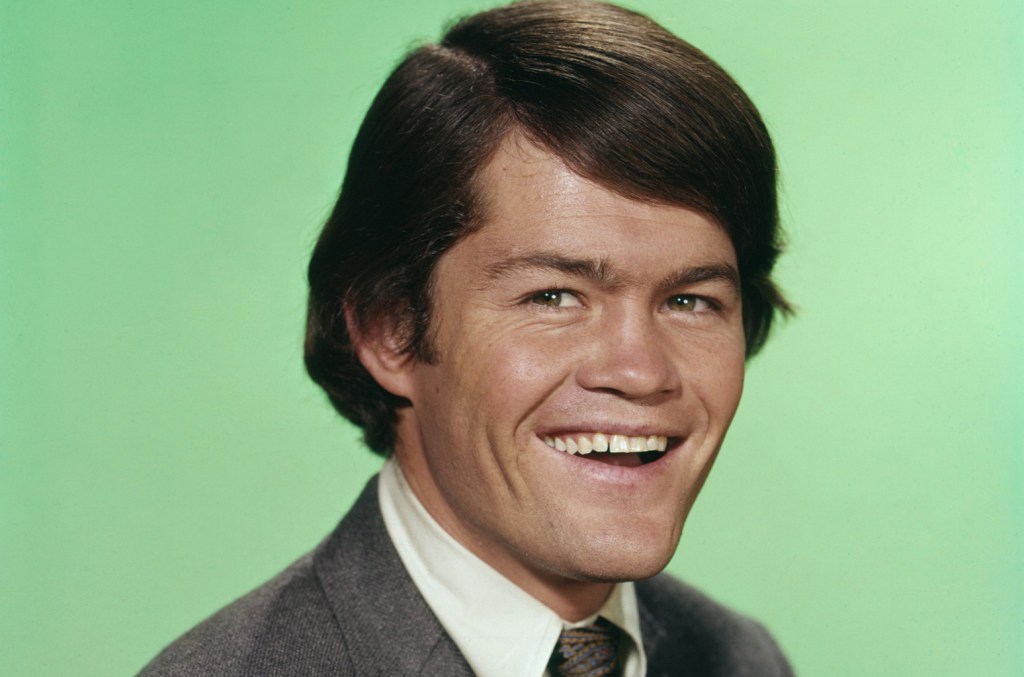
Arthur Fonzarelli could have had a way different vibe if the team behind beloved 1970s/early ’80s sitcom Happy Days had gone with their second choice. At least according to The Monkees drummer Micky Dolenz, who told People magazine that back in the day he auditioned for the role of the jukebox-smacking, shark-jumping bad boy with a heart of gold.
Explore
See latest videos, charts and news
See latest videos, charts and news
After his run on The Monkees (1966-1968), the last surviving member of that American fab four said he was on the hunt for a role that would break him out of the mop top drummer cage, so in 1973 he auditioned for the role of Arthur “The Fonzie” Fonzarelli, the leather jacket-wearing greaser next door who became the break-out star of the show.
Trending on Billboard
“I almost got it,” Dolenz, 80, said. “Supposedly it was between me and Henry [Winkler]. He remembers it too. The story I heard is that he was in the waiting room, saw me come in, and thought, ‘Oh s–t, I’ll never get this — Micky Dolenz is here!’ So we laugh about it now. He’s a good friend and a brilliant talent.”
While Yale School of Drama grad Winkler came into his audition with plenty of stage experience and roles in the indie movies The Lords of Flatbush and Crazy Joe, Dolenz was already a seasoned TV pro by the time he auditioned for Happy Days. At 11, he got the lead role of Corky in the adventure series Circus Boy, which ran on NBC for one season before jumping to ABC for another short run in 1957. A young Dolenz then scored a few TV roles in the late 1950s and early 1960s — credited as Micky Braddock — before being cast as Micky on The Monkees alongside Michael Nesmith, Davy Jones and Peter Tork.
When that show ended, Dolenz decided to focus on directing and producing, realizing that his gig as the spacey, floppy-haired drummer would likely get him typecast like his father, George Dolenz, an actor he said got pegged as a “swashbuckling romantic lead in sword-fighting movies” such as The Purple Mask and Sign of the Pagan.
“After Circus Boy, I went to a few auditions as a 12-year-old, and the minute I walked in, they’d say, ‘Circus Boy’! That’s just typical in this business. I knew it was par for the course,” said Dolenz, who added that after the Monkees it was more of the same. “‘What are you doing here? We don’t need any drummers!’” he said casting directors would tell him.
Following his pivot to a number of small movie roles and voice work on dozens of cartoons in the 1970s, “I’m a Believer” singer Dolenz said he has no regrets about the one that got away. “Oh my God, he’s just so good,” he said of Winkler, who parlayed his iconic role into a fifty-plus year career on TV (Mork & Mindy, Arrested Development) and movies (Night Shift, The French Dispatch). “I was definitely not as good as he was. Come on — he was The Fonz! He had that New York, New Jersey thing down. I’m from Southern California. It wasn’t gonna happen!,” Dolenz said.
Dolenz is going on tour this summer with his Songs & Stories tour, which mixes his iconic hits with stories about fellow L.A. legends such as Joni Mitchell, David Crosby and Jim Morrison. The tour is slated to kick off on August 11 at the Ocean City Music Pier in Ocean City, NJ.

 State Champ Radio
State Champ Radio 
